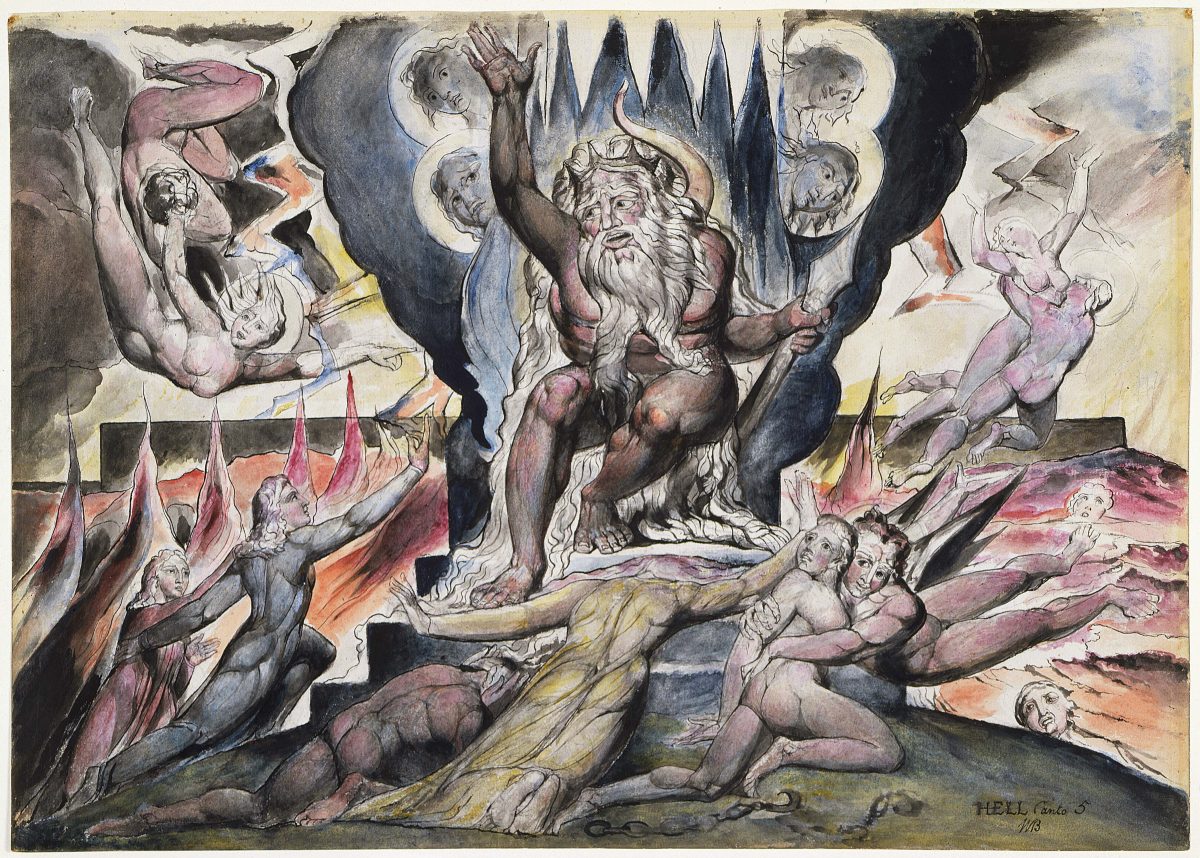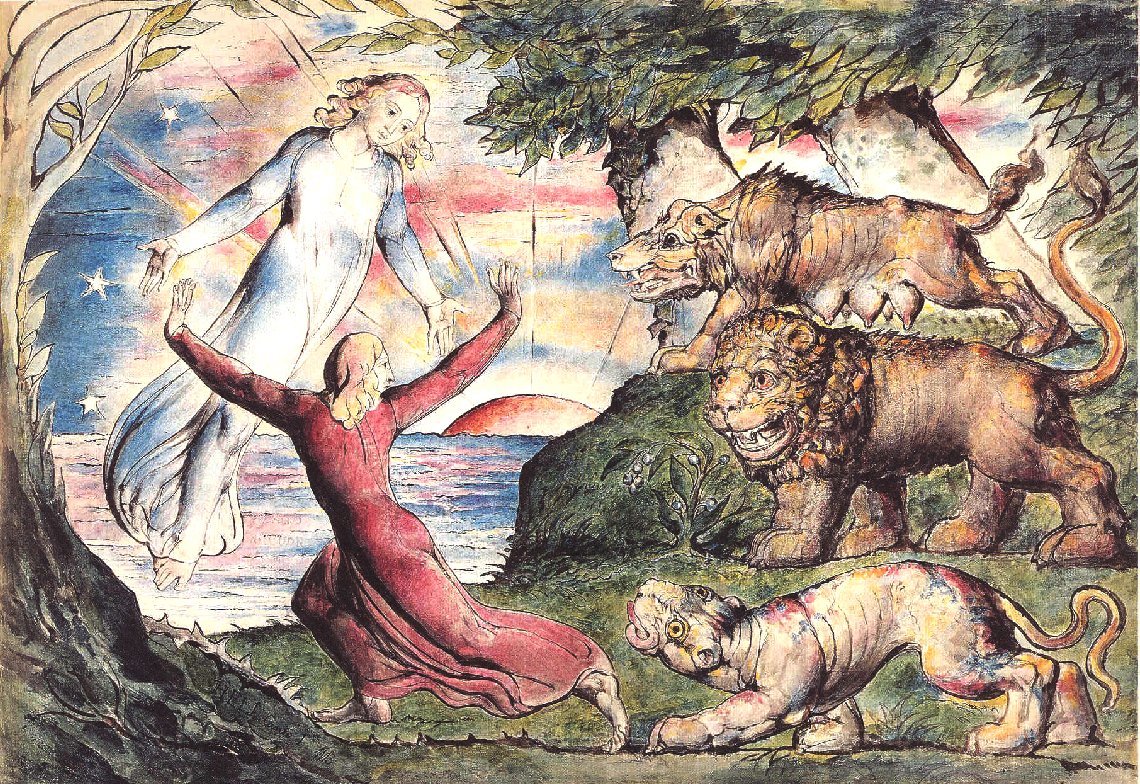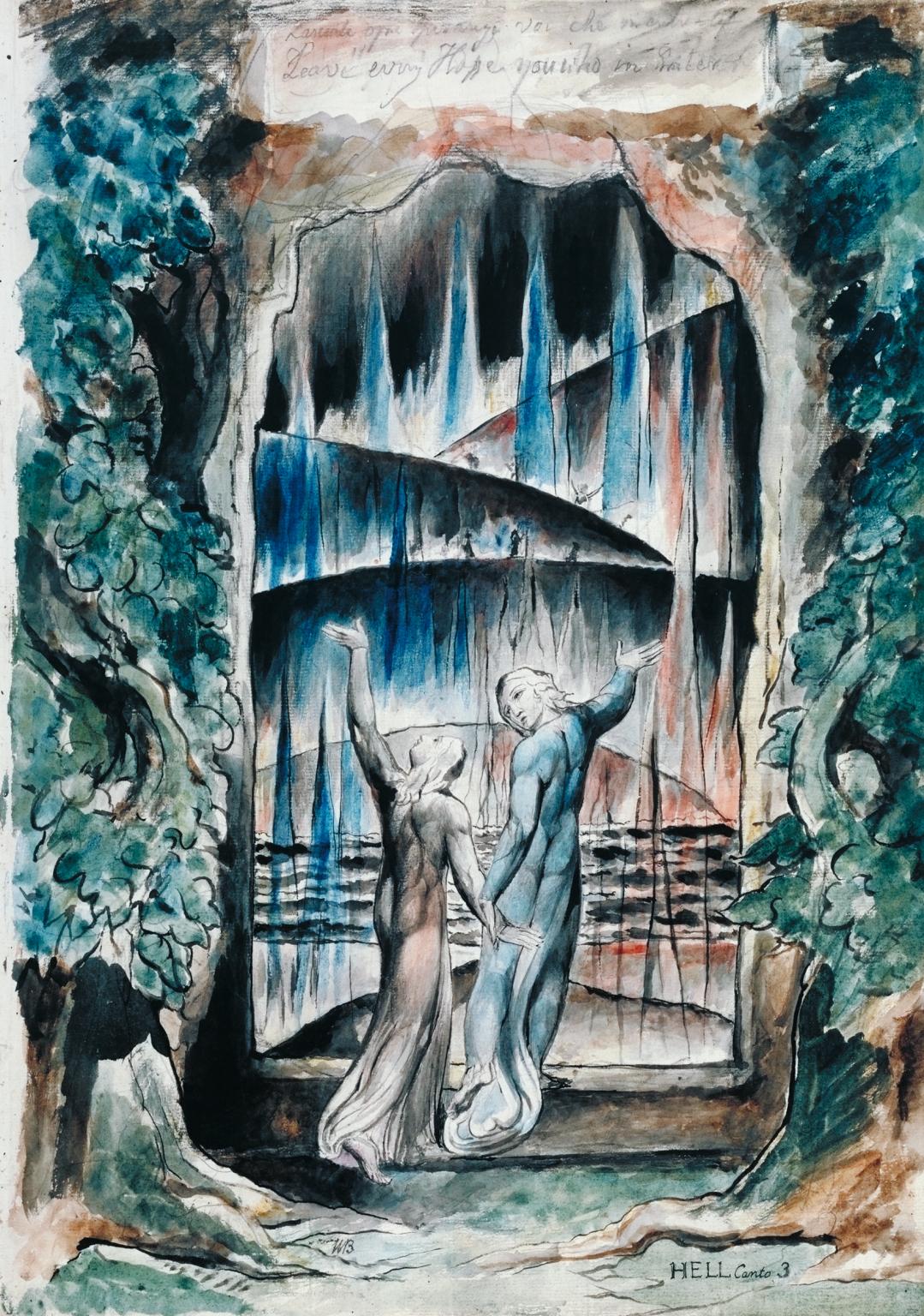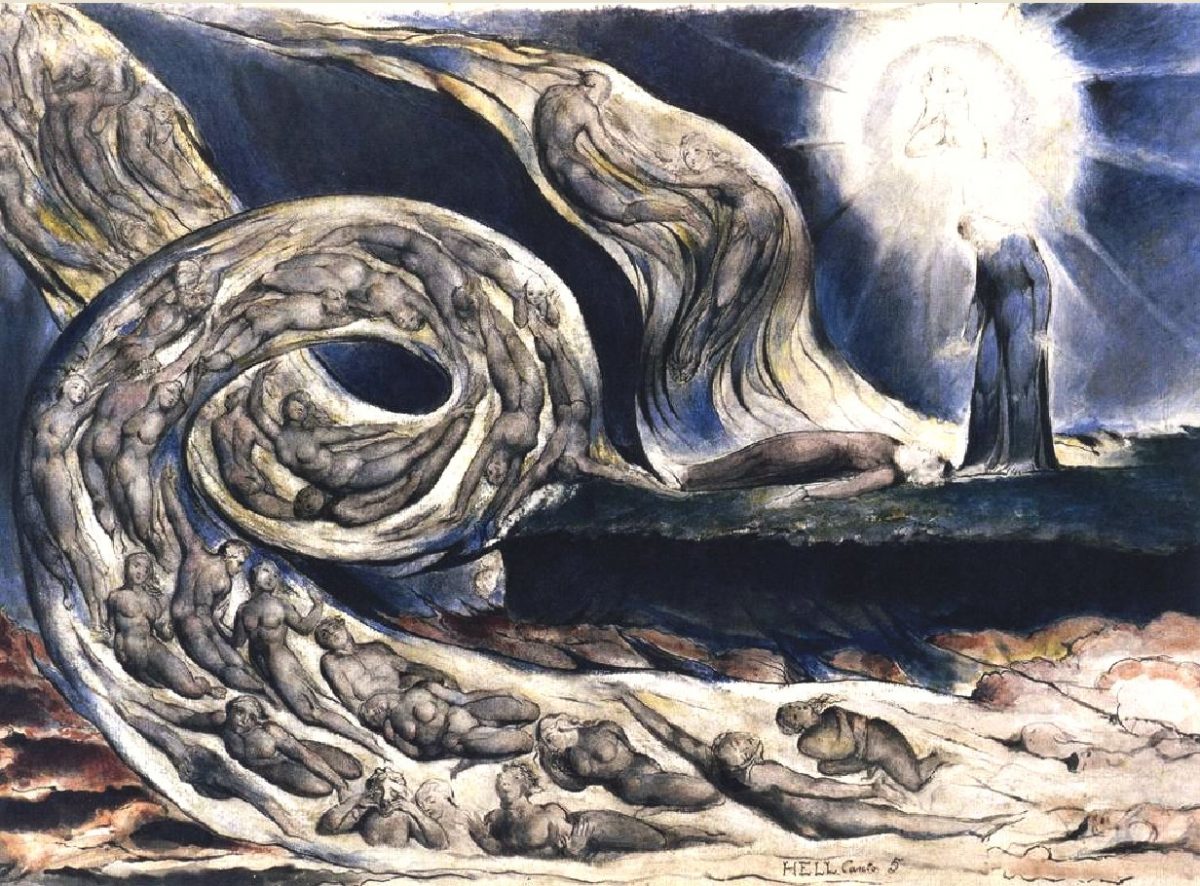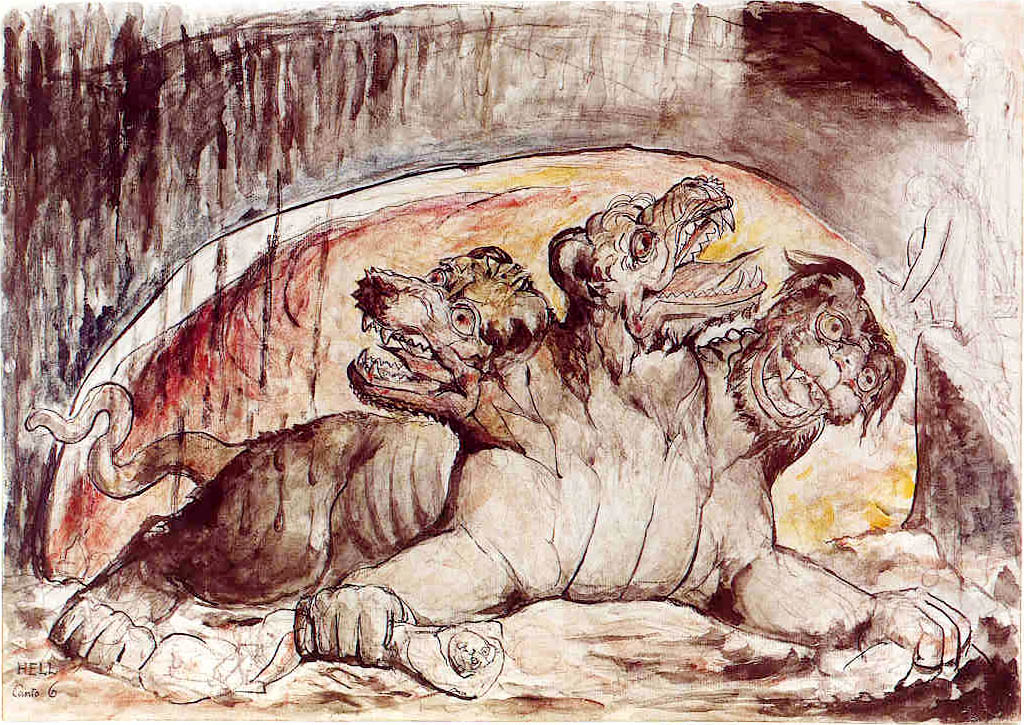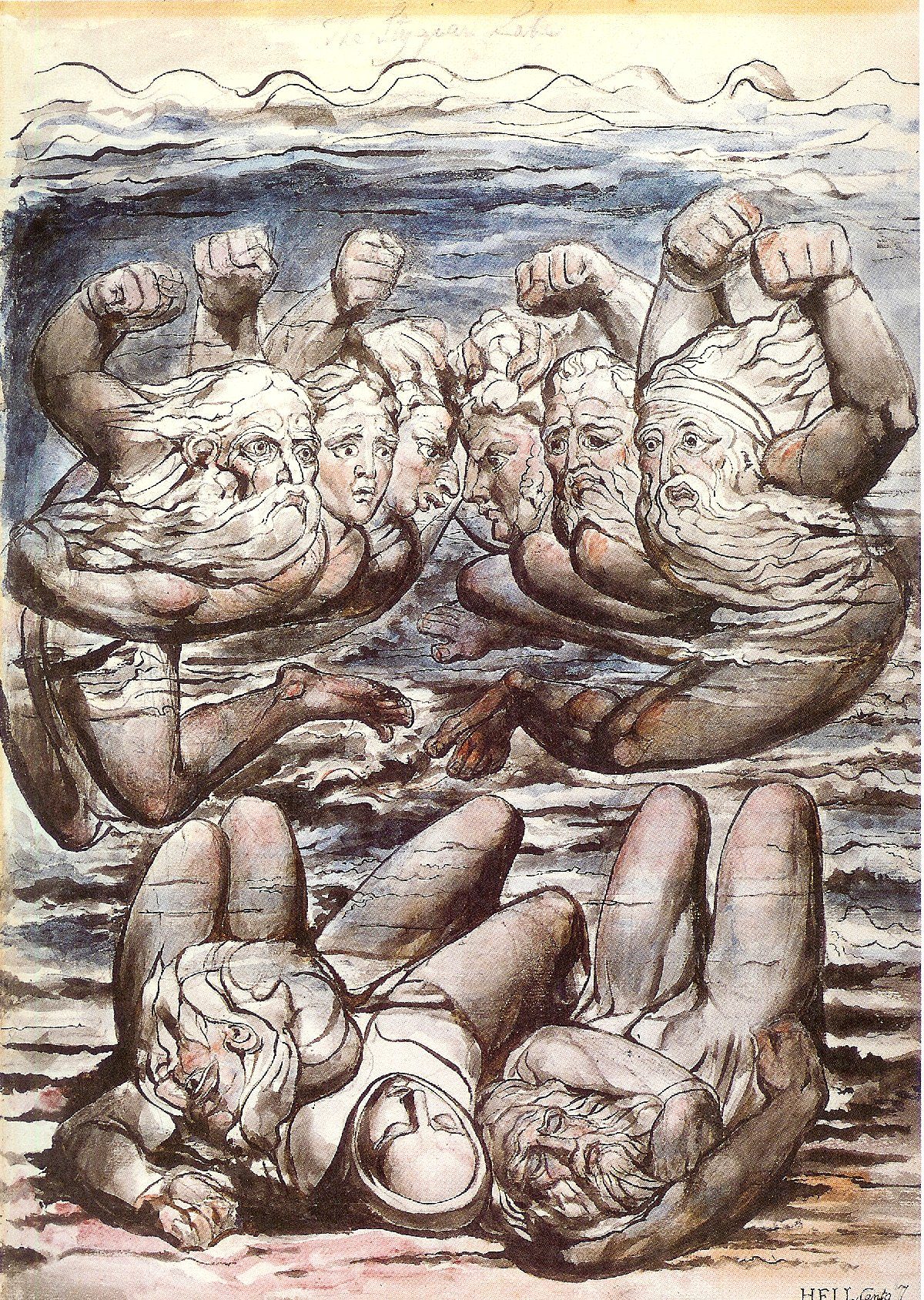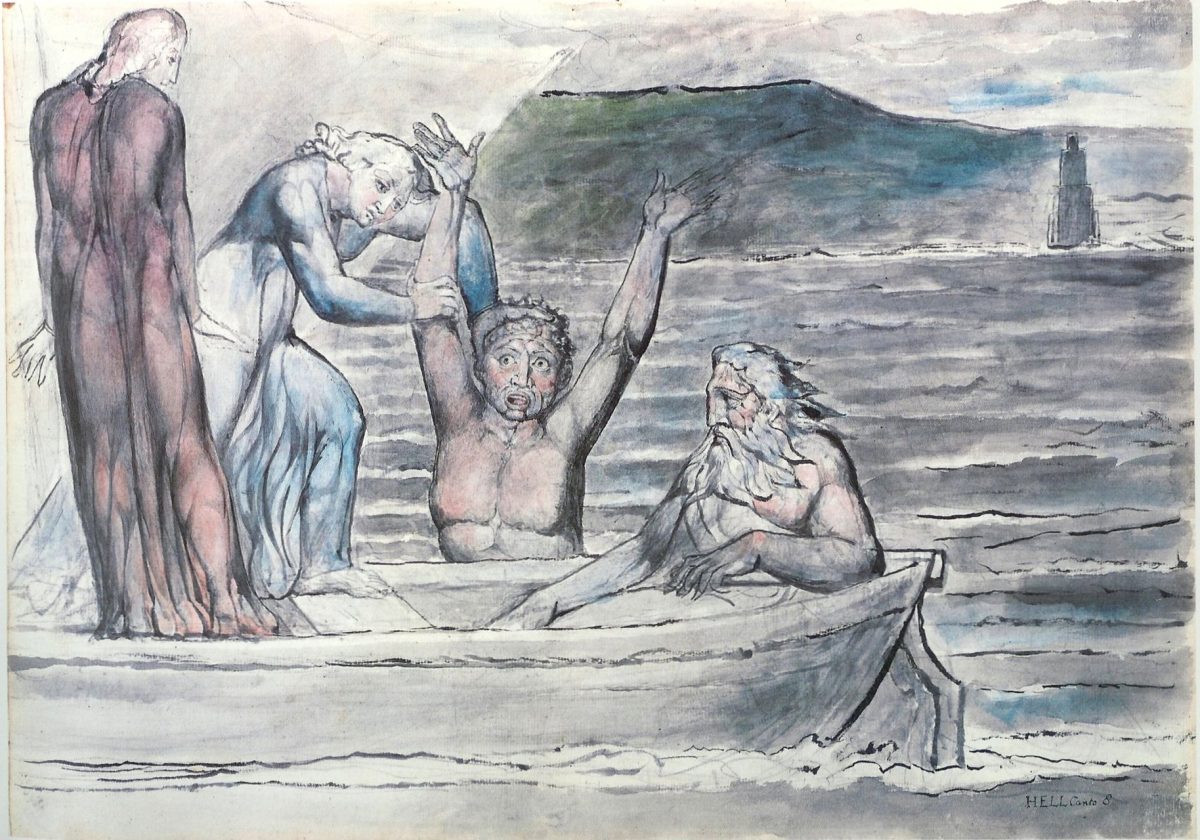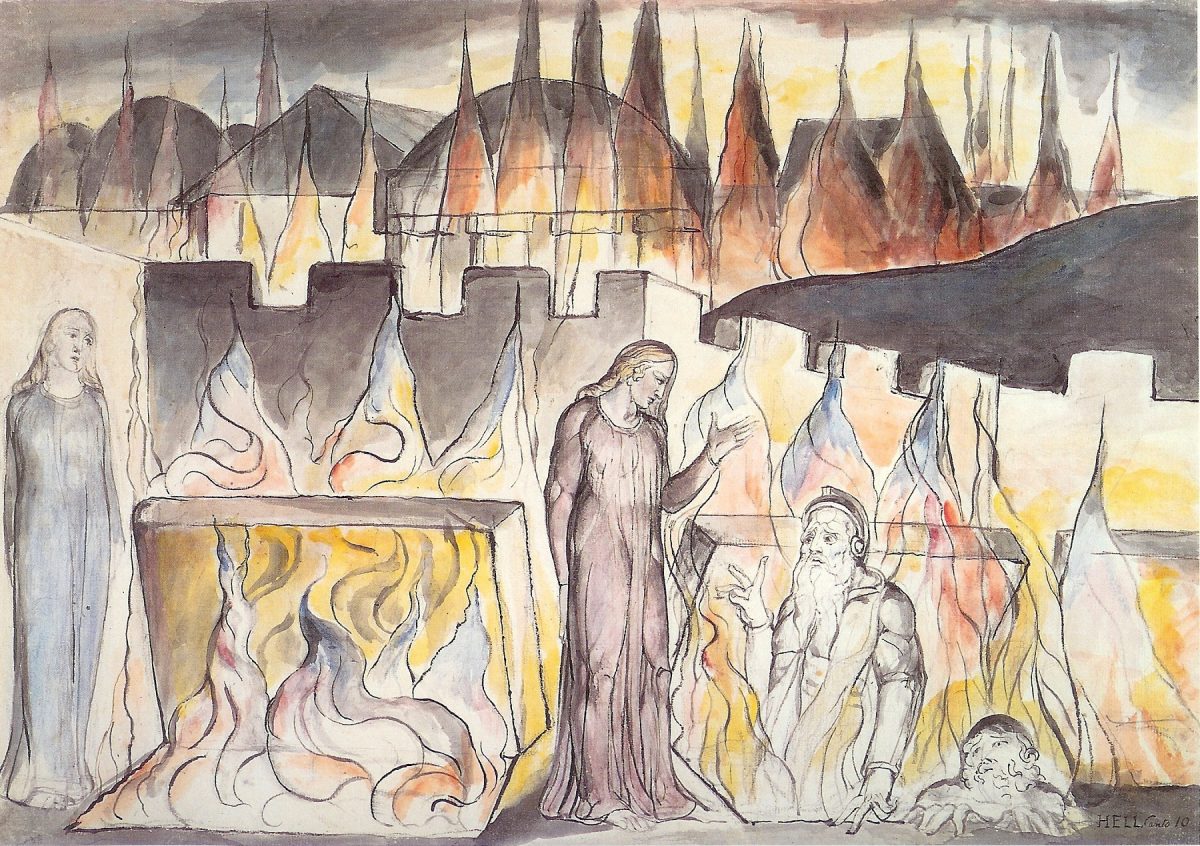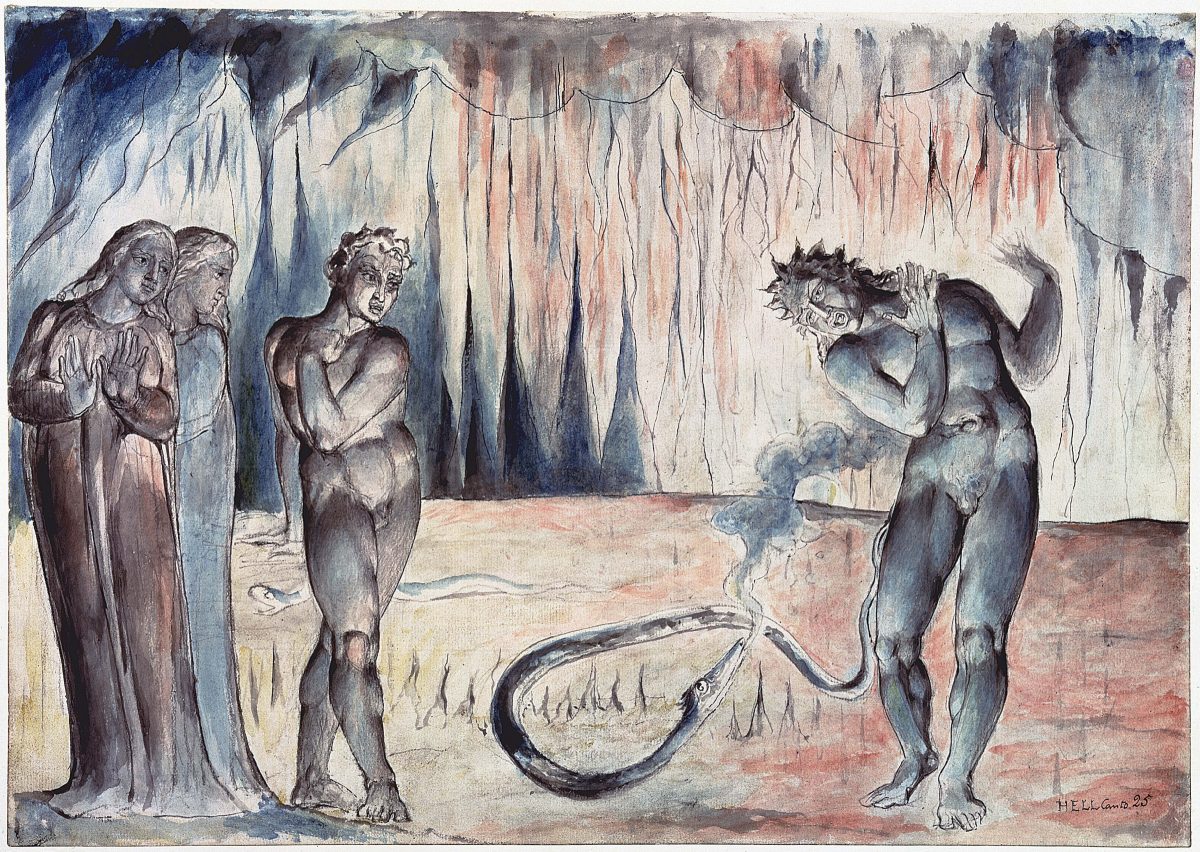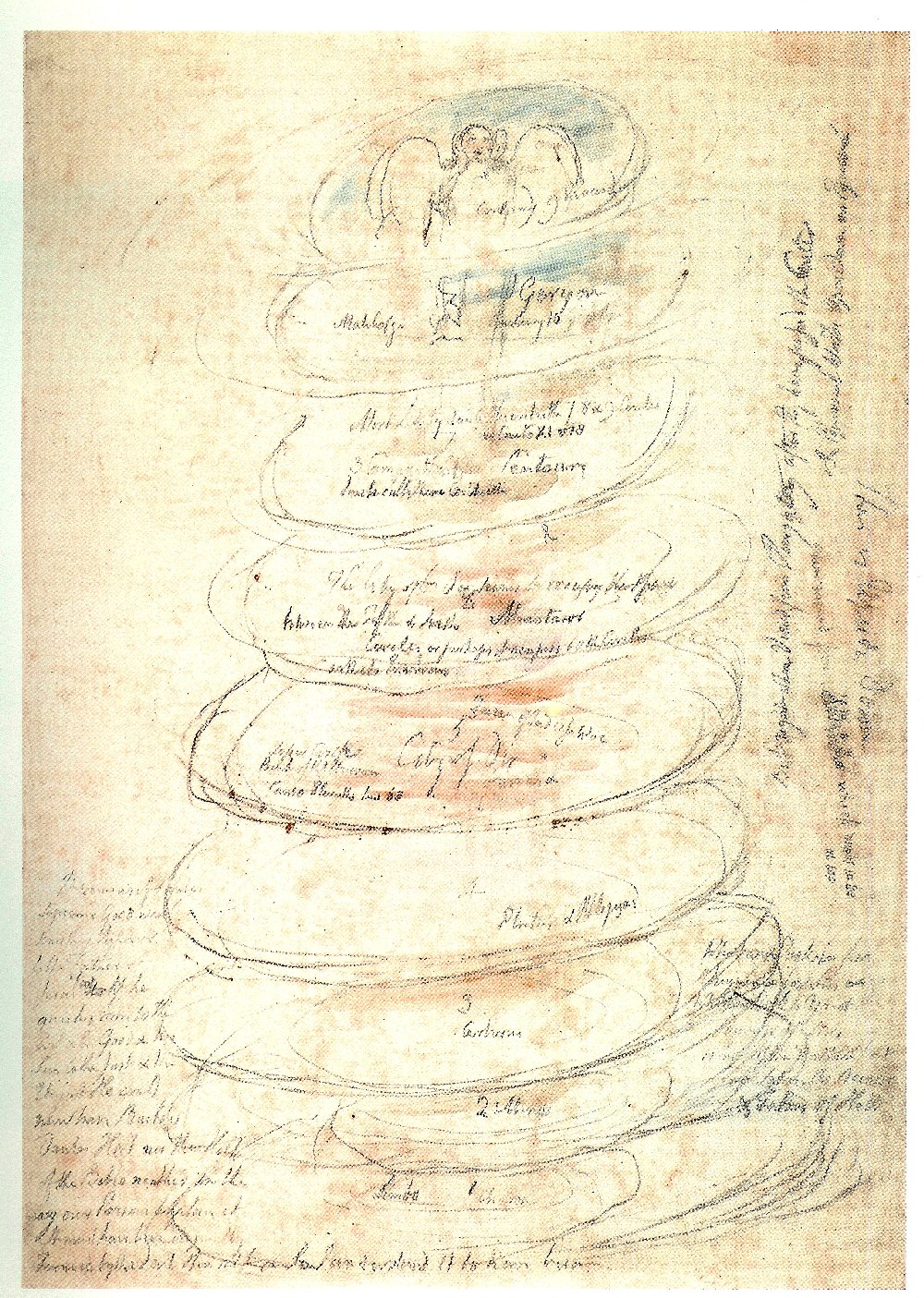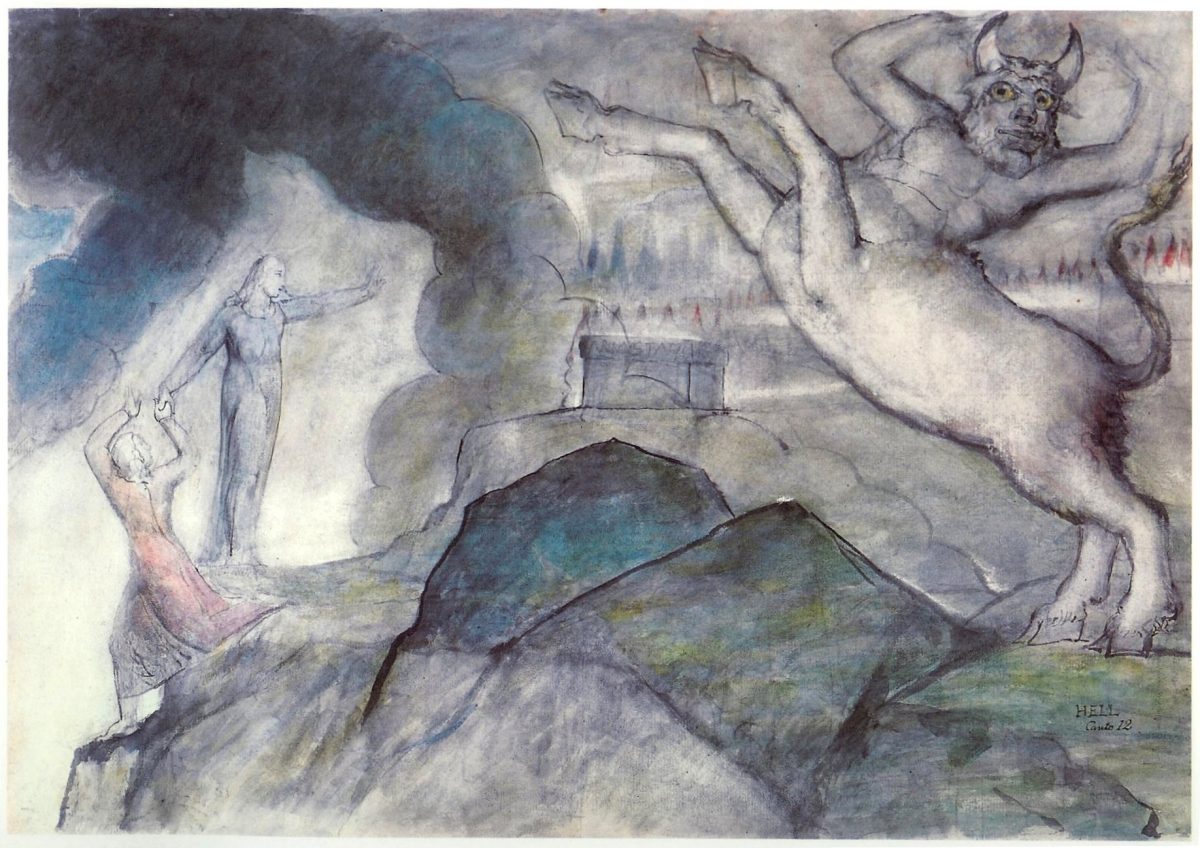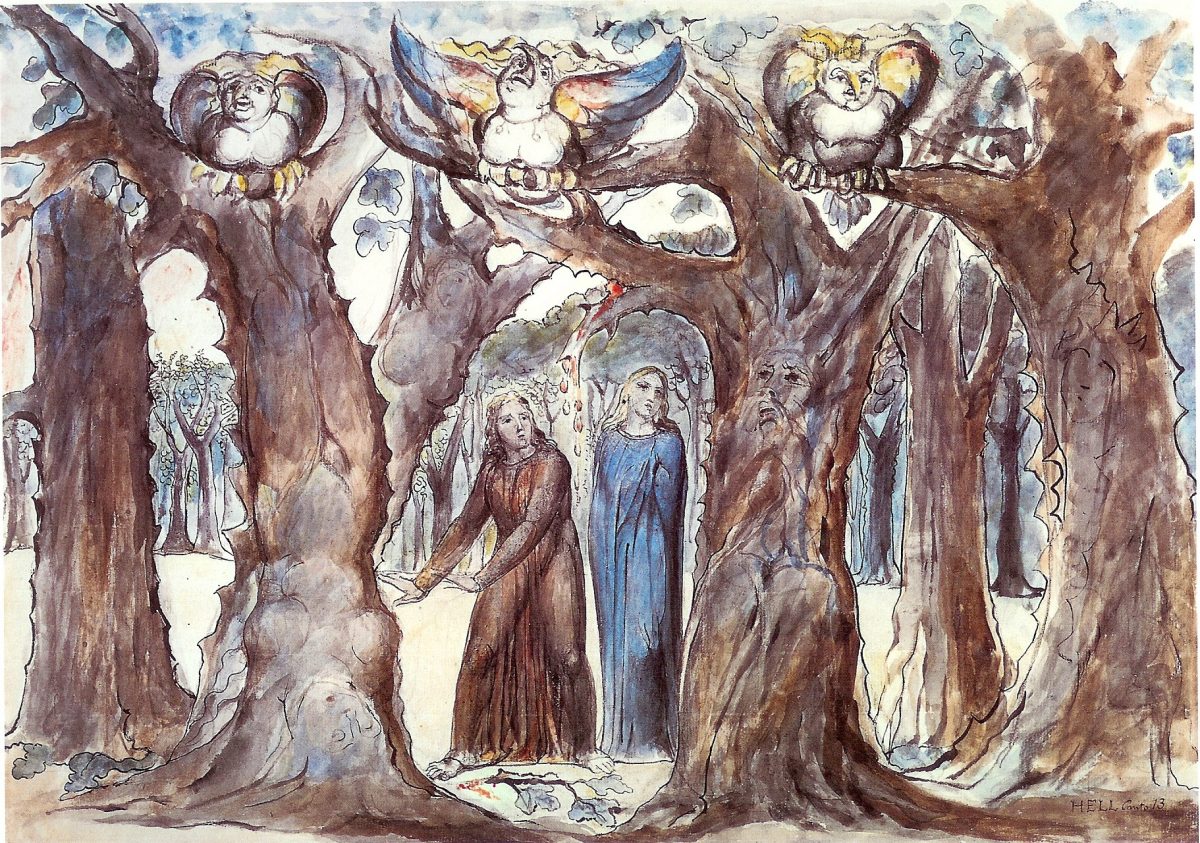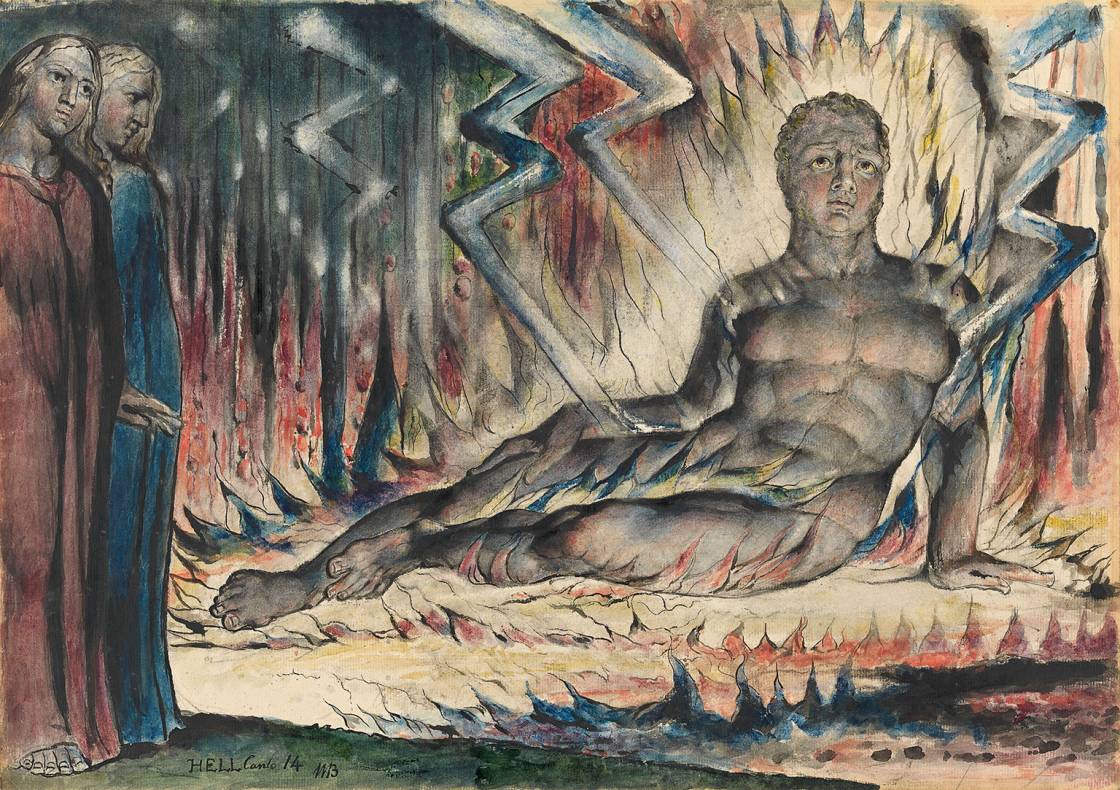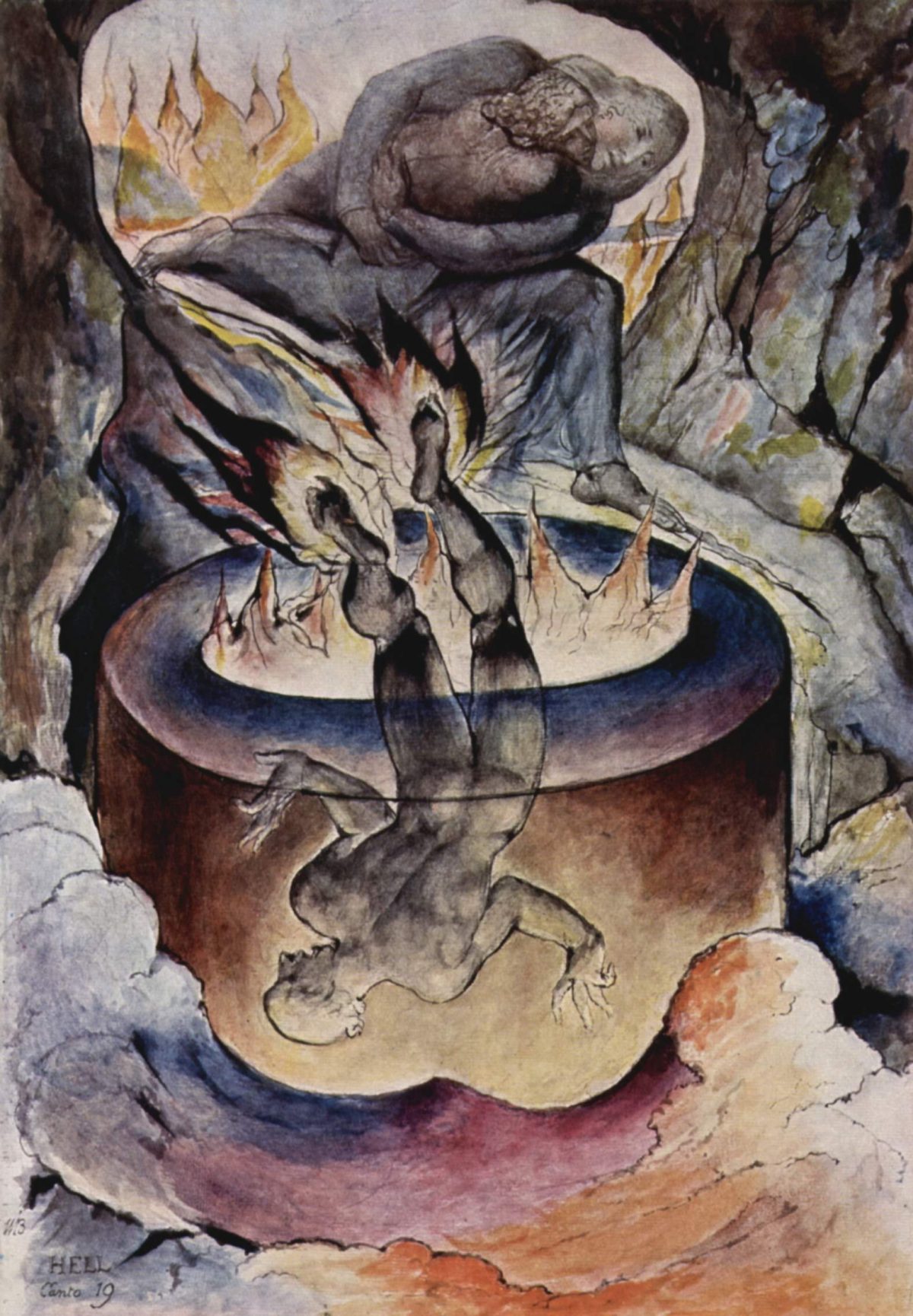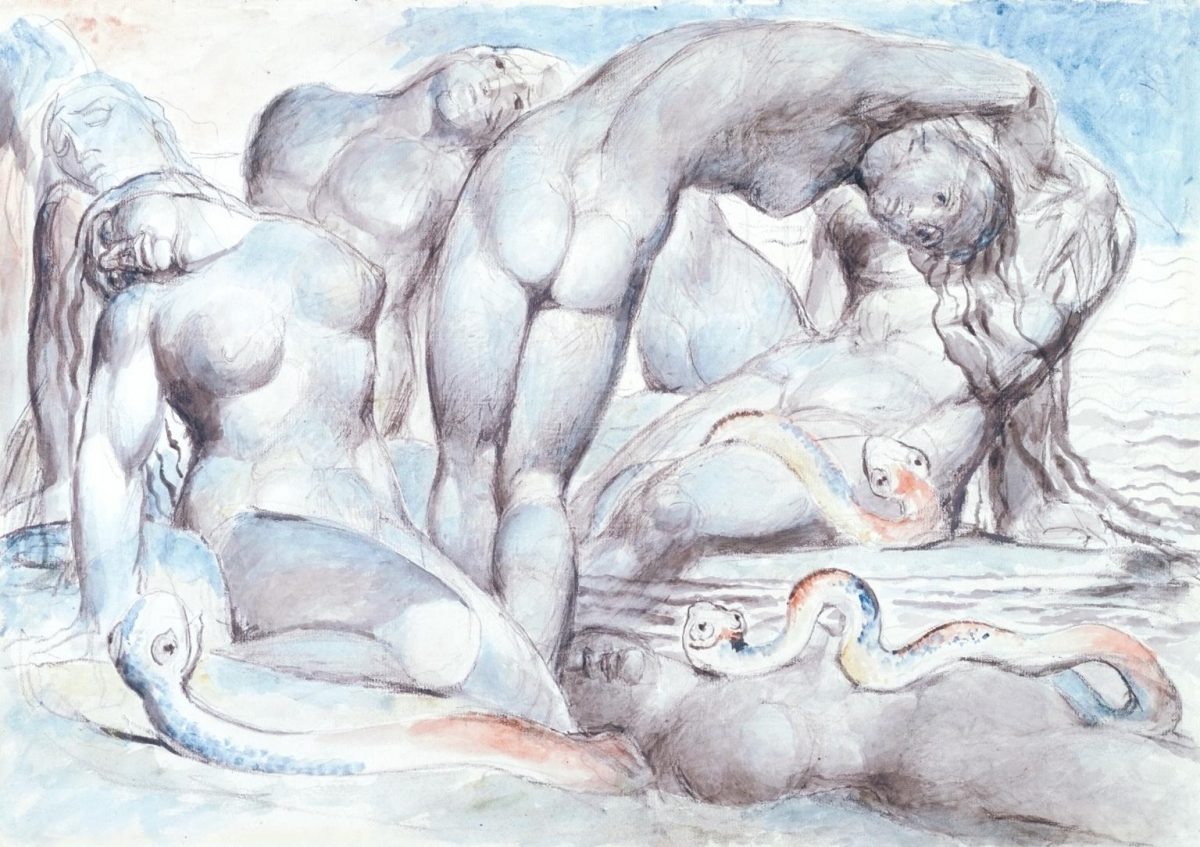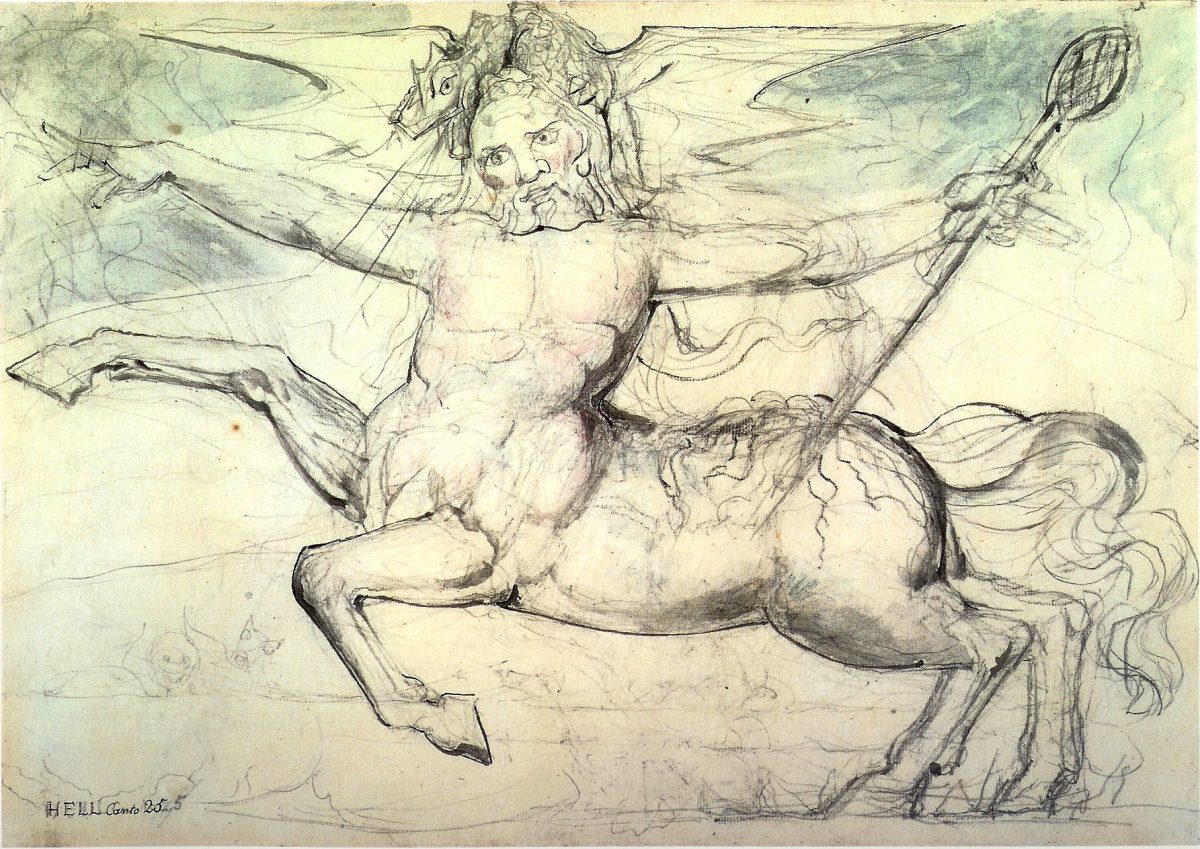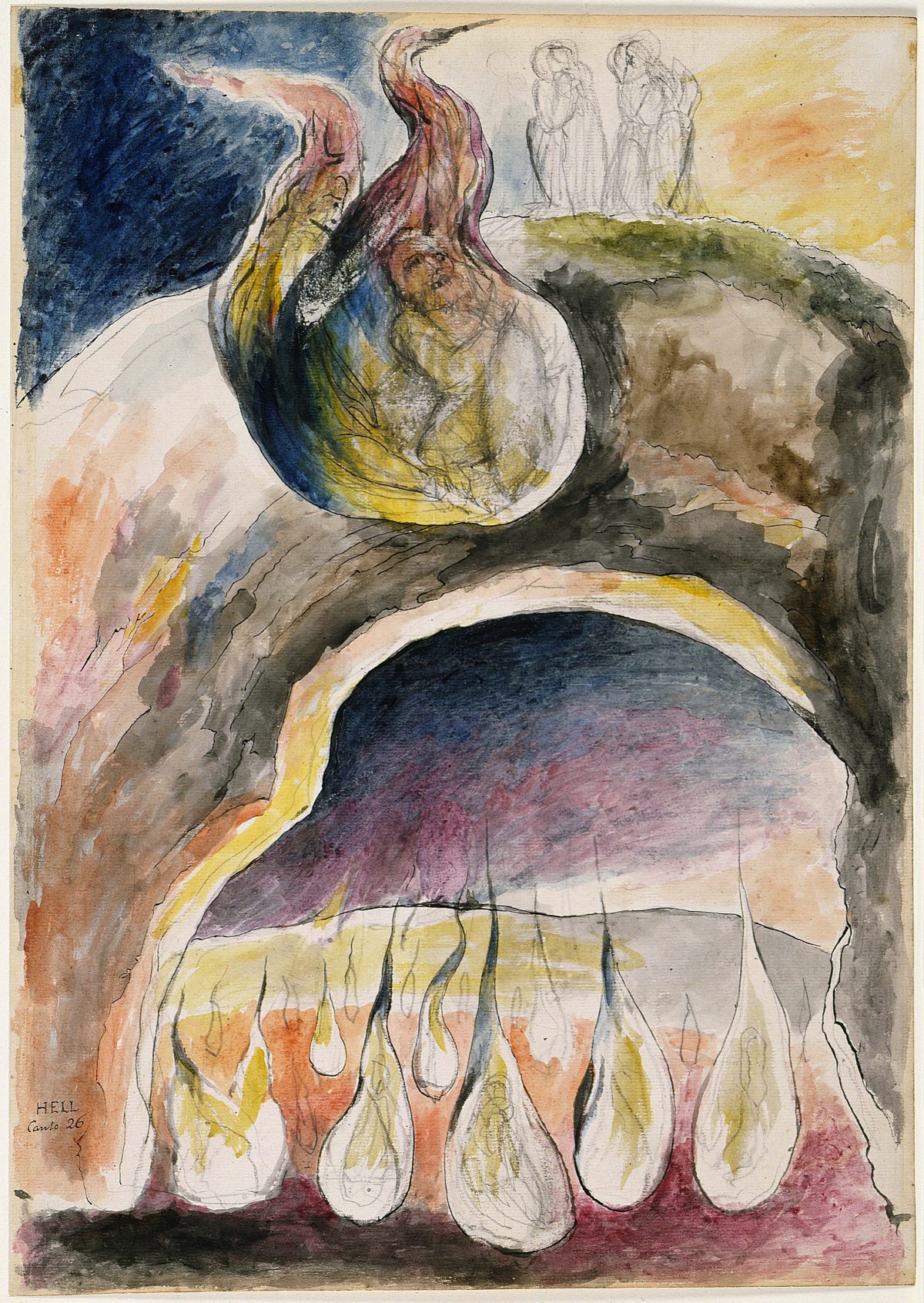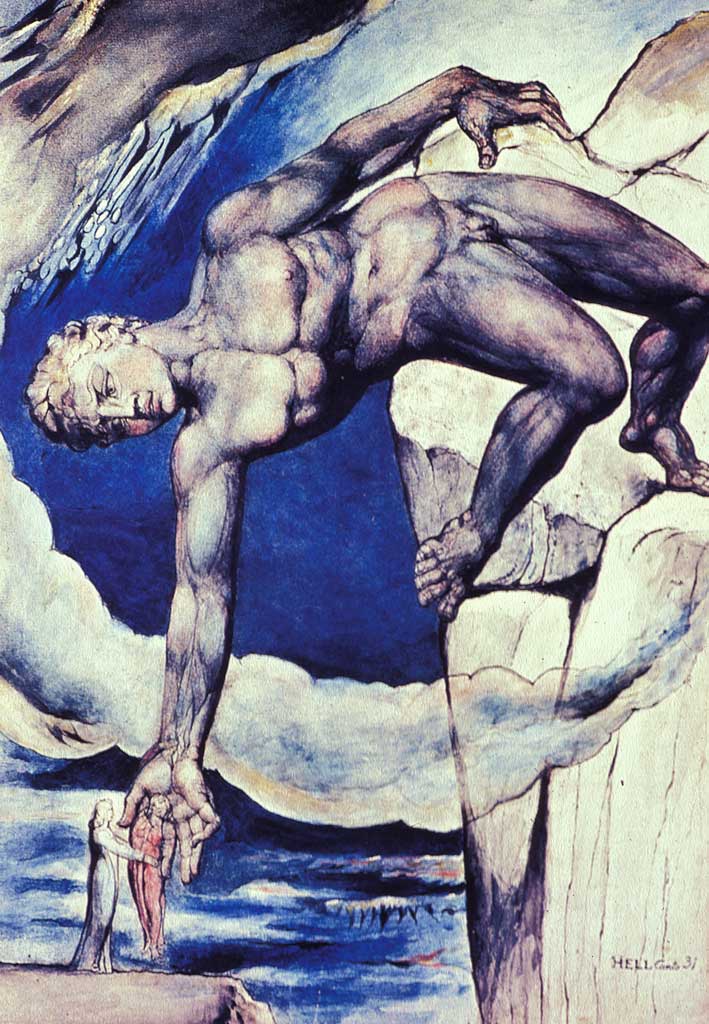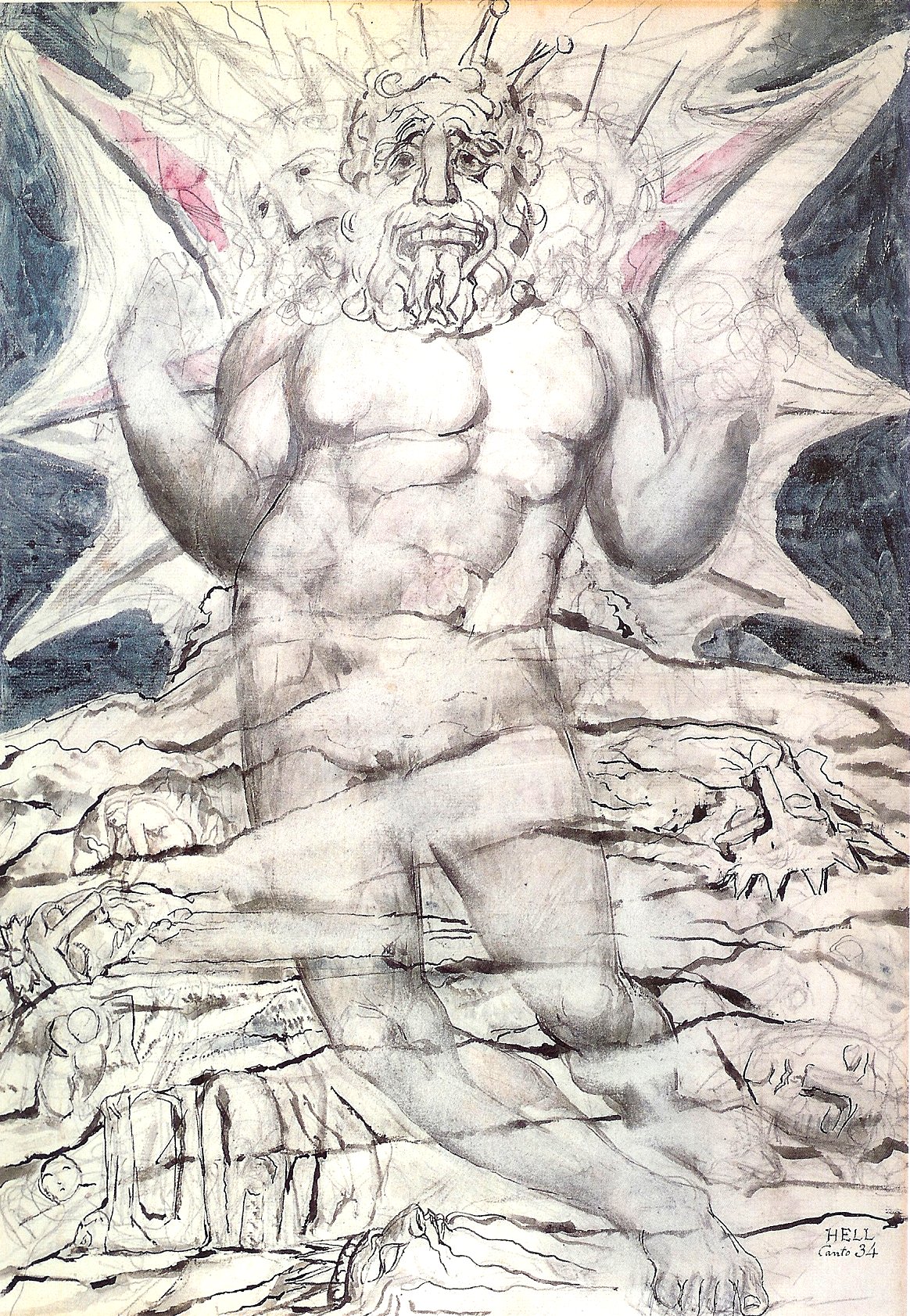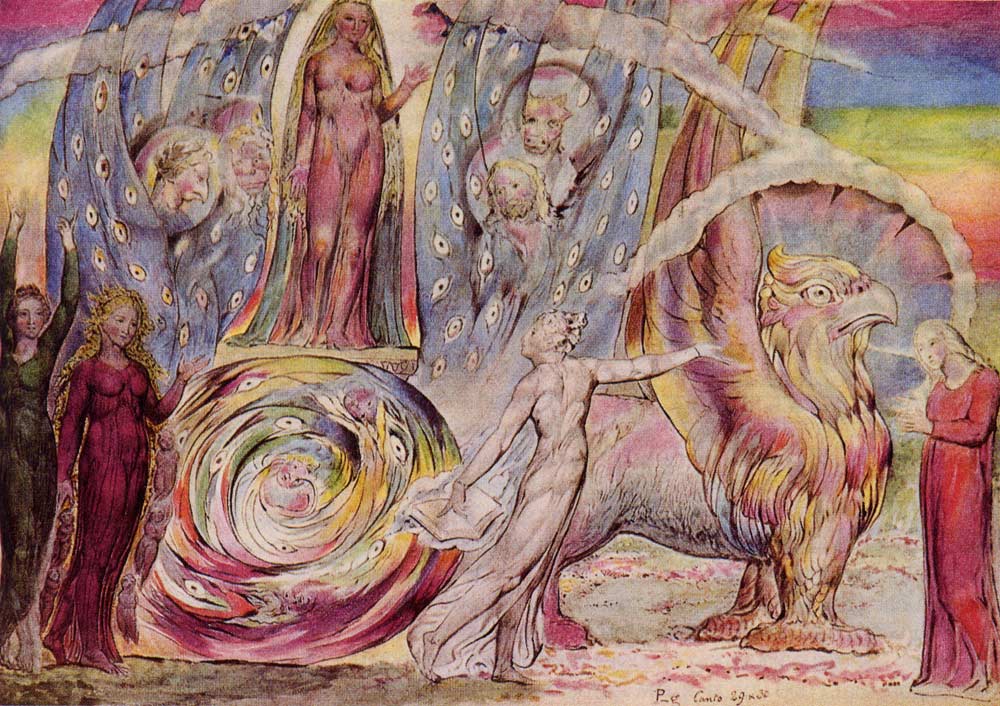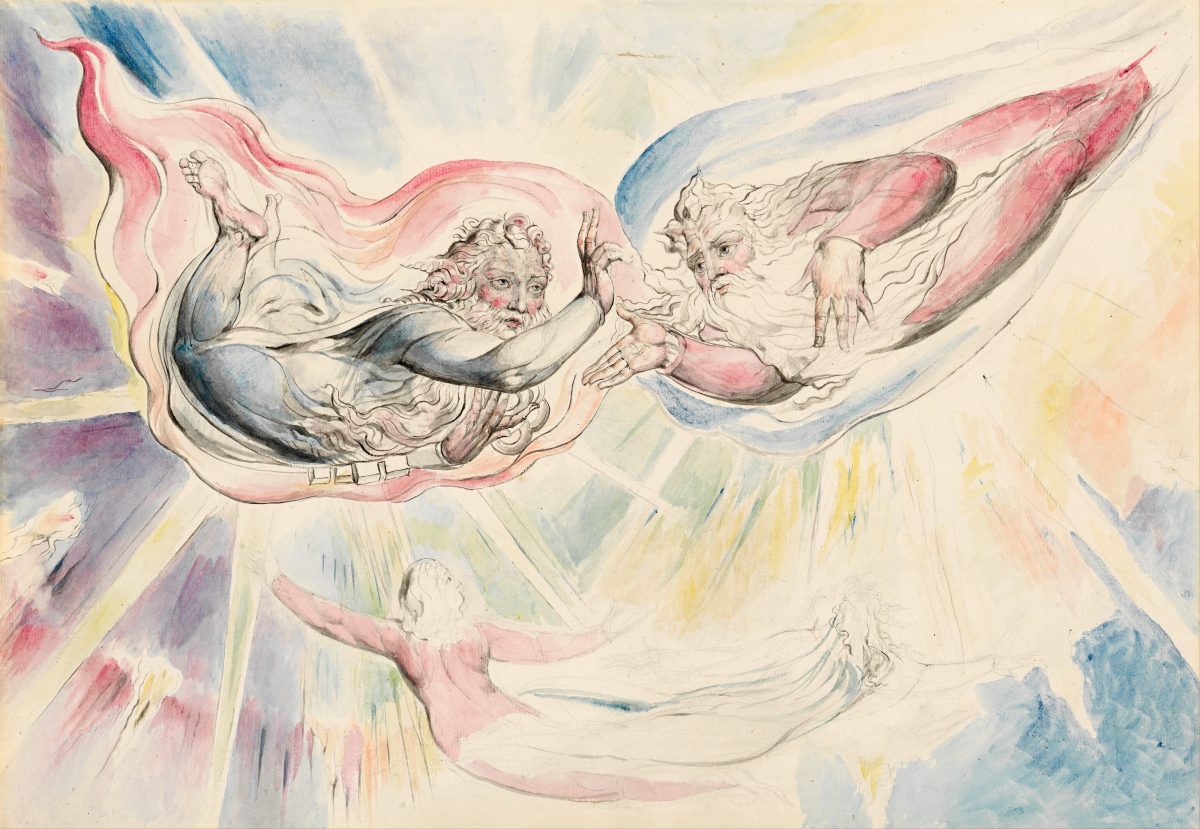“Every thing in Dantes Comedia shews That for Tyrannical Purposes he has made This World the Foundation of All & the Goddess Nature & not the Holy Ghost”
– William Blake
In 1826, William Blake accepted a commission to illustrate Dante’s Divine Comedy (1320). Blake created 102 drawings for the book before he died, leaving the project unfinished. They rank alongside the great artist’s illustrations of Chaucer, his oil painting, like The Ghost of a Flea, and that glorious metaphysical, satirical drawing of Sir Issac Newton sat on the sea bed conspiring to “unweave the rainbow”. There was ever a chasm between the man who claimed to have seen an angel in a tree in Peckham Rye and the great materialist who created the law of universal gravitation and sought rational explanations in the fantastic.
If any artist can combine words and pictures to powerful effect, it’s the visionary Blake, whose Songs of Innocence and of Experience is as true a marriage of visuals and verbs as anyone has managed. His drawings lack precision, with parts reminiscent of a child’s sugar-fuelled scribbling, but the result is mesmerising. Blake’s images are packed with verve, movement and the assertion that something strange is out there.
Lead image: Dante running from three beasts is rescued by Virgil
Would you like to support Flashbak?
Please consider making a donation to our site. We don't want to rely on ads to bring you the best of visual culture. You can also support us by signing up to our Mailing List. And you can also follow us on Facebook, Instagram and Twitter. For great art and culture delivered to your door, visit our shop.
